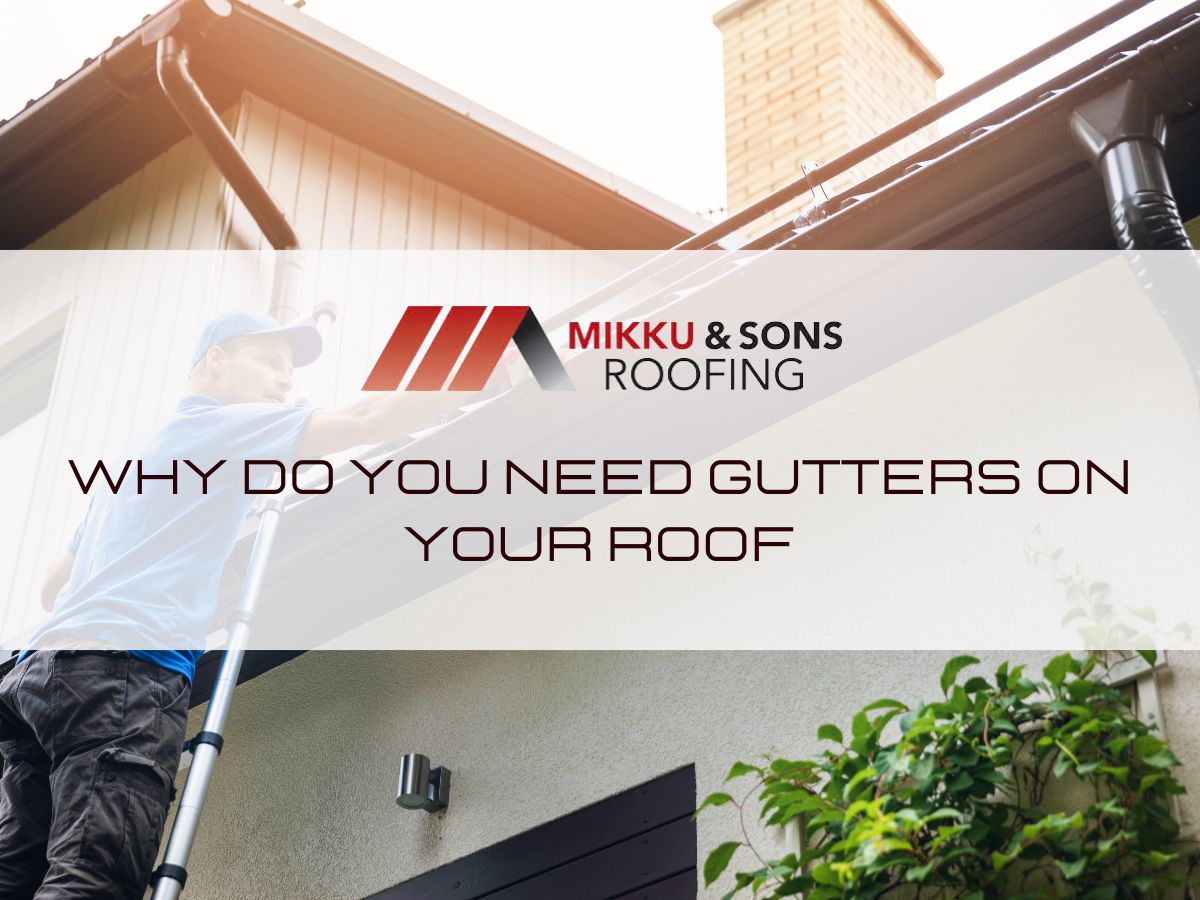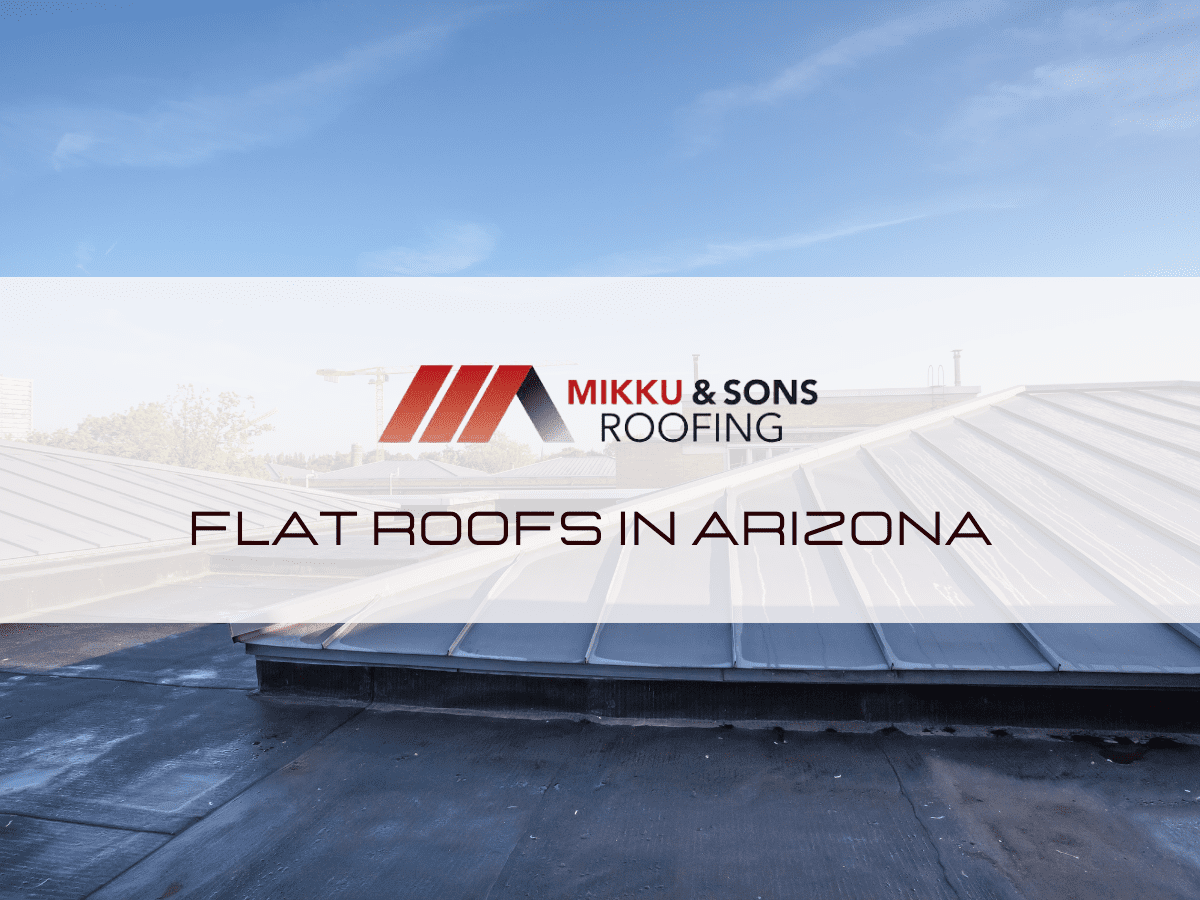

Flat roofs are ideal for Arizona's hot and dry climate; they are also a long-term investment for homeowners. These roofs can help keep the temperature down during the year's hottest months.
They are popular among homeowners in Arizona because of their ease of replacement and maintenance. When it comes to flat roofs, it is crucial to use the right materials and maintain them properly to enjoy the benefits.
These roofs are pitched between zero and ten degrees.
Adobe is a common building material, and many of Arizona's residences are constructed out of this venerable material. However, it has been replaced by lighter and more durable materials due to innovation.
As far as flat roofs are concerned, polyurethane foam roofing is the most popular option in Arizona. Polyurethane can tolerate the expansion and contraction of a building's structure, giving it an advantage.
It's light, strong, and completely seamless. Flat roofing alternatives in Arizona are plentiful, and these are some of the best.
Built-up roofs (tar or gravel roofs) are a well-known and widely used flat roof construction method that uses heated asphalt and alternating layers of roofing felt or fiberglass to create a long-lasting, durable roofing system.
When it comes to protecting a roof, asphalt(link) is a great option. Most tar-and-gravel roofs are expected to last at least 25 years, but if properly maintained, they can last up to 40 years.
This is owing to the materials' robustness, such as the embedded gravel, which does not degrade quickly. As a sun shield, the gravel on the roof's surface shields the material from damaging UV rays.
In Arizona, modified bitumen is a popular choice for flat roofing because it offers an excellent advantage for the hot climate. It can reflect solar heat from the roof.
This tough-yet-flexible waterproof membrane is created by mixing asphalt with polymerized rubber or plastic and then reinforcing it with fiberglass. It's also known as 'torch down roofing,' lasting between 10 and 15 years.
The energy efficiency and durability of foam roofs make them a popular choice, despite being one of the more expensive flat roof options. In Arizona, polyurethane foam is used to cover nearly all flat roofs.
Foam roofs are not only lightweight, waterproof, and low-maintenance, but they can also shield from the sun's UV rays. They are also easy to maintain.
Modern technology makes it feasible to manufacture strong roofs out of PVC. In the single-ply roofing sector, polyvinyl chloride (PVC) membranes have been hailed as one of the best materials for flat roofing.
The thickness of PVC roofing varies; the more layers you have, the more durable your flat roof is.
1. EPDM (Ethylene Propylene Diene Terpolymer)
EPDM (Ethylene Propylene Diene Terpolymer) is the most popular single-ply flat roof material for commercial and residential applications. It has simple installation, is lightweight, and is affordable.
It will last nearly indefinitely, even in hot climates like Arizona. A properly installed and maintained EDPM rubber roof should last at least 20-30 years.
Rubber roofs are installed by either being ballasted or by being adhered to. EPDM rubber costs $1.40 per square foot and $5.00 — $7.00 per square foot to install.
Rubber roofing that is adhered to the roof is stretched over a fiberboard or insulation board to produce an impenetrable, watertight seal.
In contrast, a ballast lies on top of the rubber roofing in a ballasted rubber roof. They aren't kept in place by tar, giving easy access if you need to access or replace the rubber roofing.
They often require regular maintenance because glue-based solvents are used, and eliminating all air pockets in the seals can be challenging to ensure a tight seal.
Fortunately, repairing one is still a simple and inexpensive process.
2. TPO membrane roofing
In Arizona, TPO roofs are an excellent option for homes because of their high heat reflectivity. It is exceptionally resistant to UV radiation and will not degrade from the regular sun exposure we see in the Southwest.
It costs $1.90 per square foot and $6.00 — $8.00 per square foot to install. Similar in color and appearance to PVC, white or gray TPO is a material stretched tautly over the roof's surface.
Polypropylene and ethylene propylene polymers are used in its construction, and depending on the use, TPO sheets may also be reinforced with polyester.
3. PVC membrane roofing
PVC is the most durable material on the market. It costs an average of $1.90 per square foot for materials and $6.00 — $8.00 per square foot for installation.
Roofs made of this plastic are impervious to extreme temperatures and elements such as wind and rain. Buildings in Arizona can benefit significantly from the heat-reflecting properties of this roofing material, which is why it is so popular.
Sheets of PVC are glued, mechanically connected, or ballasted to the surface. A hot-welding process eliminates seams, making PVC virtually leak-proof. It's so long-lasting that most manufacturers' warranties cover it for at least 25 years, if not a lifetime.
If you want a roofing material that won't fade or degrade in the sun, this is the one for you!

For built-up roofs and ballast roof systems, rocks or gravel on a flat roof are essential. The weight of the roof is evenly distributed by gravel or stone.
Due to the extreme heat and frequent storms, Arizonans expect their roofs to perform exceptionally well. The roofs need to be long-lasting and withstand the heat to some extent.
The two most common roof cladding in Arizona are shingle and tile.
Asphalt shingles are the most prevalent choice for roofs in Arizona since they are durable, lightweight, inexpensive, and simple to set up.
Flat roofs should not be covered with shingles. There is no way to seal the roof shingles. Thus, they will leak.
Tar, bitumen, rolled, or rubber roofing material is ideal for low-slope or flat roofs. Fortunately, this shouldn't be a problem in Arizona.
Asphalt shingles are available in a variety of styles, but the two most common include:
3-tab asphalt shingles are one of the most common types of asphalt shingles and the simplest.
They have a slate-like appearance, are flat, and are perfect for modest-sized homes. Due to their single layer of asphalt construction, they are lighter and less expensive than other varieties of asphalt shingles but have a lower wind rating.
They are made using multiple layers of asphalt that are bonded together to create a sturdy and thick appearance. They are heavier than basic strips because they are connected.
Compared to other asphalt roofs, they are more durable and have a higher wind rating.
Flat roofs are typical for residences and businesses in Phoenix and the surrounding suburbs. Flat roofs have both advantages and downsides, as this article describes.
| Advantages | Disadvantages |
| Cost: Flat roofs are less prone to damage and require less maintenance over their lifespan. They cost less in labor and materials during installation. | Style: Because they don't have the same aesthetic appeal as pitched roofs, flat roofs tend to stand out more in a neighborhood. They're not very attractive from the outside, but this doesn't necessarily mean you should avoid them altogether. While they have greater outdoor living space, they could also have less interior living space because there is no attic in the house. |
| Easy maintenance: Flat roofs are safer and easy to inspect regularly due to the absence of constant fear of falling from the roof; performing routine maintenance such as inspecting sidings, cleaning gutters, or even patching a hole becomes much more manageable. | Insulation: Flat-roof buildings are more susceptible to dramatic temperature changes. They have less attic space and therefore less air to maintain the heat lost by the house. This can lead to high utility bills during extreme temperatures. |

Flat roofs are great, but they require a little more attention than a sloping ones. Debris falls readily from a steeply inclining roof.
There are flat roofs, and it's easy for trash to build up. Keep your home flat roof in top shape with these easy-to-follow tips.
This is the most critical item on the list in terms of maintenance. Your roof will be flooded if the drains are clogged.
Water damage might occur due to a leak if there is standing water. Water damage can cost a lot of money.
Second, the additional water weight might cause the roof to collapse, resulting in a loss of structural integrity.
You need to sweep up leaves and dirt when they accumulate on your roof. Water can also be impeded from dripping off the roof by this debris.
Recoat your roof every 5 to 10 years to protect it from the sun's ultraviolet radiation and help it last 25 years or more.
What do you want to build? A house for your family or a place of business? Roofs are important parts of any construction, and investing in a good roof is essential to the intended function.
Flat roofs have the following advantages, to mention but a few.
| Benefits | Explanation |
| Fast installation | Measuring a sloped roof is more complex, and so is its construction. Installing most types of roof cladding is easier on a flat roof due to fewer safety concerns and other factors. Because flat roofs don't have seams, there are fewer places to seal. |
| They offer more space | You might use a flat roof on your home, apartment complex, or warehouse to save money. Flat roofs offer a wide range of possibilities for entertaining, growing food sustainably, and conducting business. Many people in metropolitan settings, where gardening space is few or nonexistent, convert flat rooftops into green spots where they can grow plants, such as fresh herbs, and cut down on grocery store visits. Property owners are drawn to this choice because of the ease of installation and the additional space. |
| Energy efficiency | Reflective paints and sealers help reduce heat accumulation and damaging UV radiation in your structure. Insulation in the attic and crawlspace can be reduced using reflective white roofing materials and membranes. Flat roofs also have less attic space, allowing the efficient dispersion of heat. |
As far as roof systems go, you may expect a roof to last anywhere from 10 to 50 years. Modern roofing materials can last a long time when properly installed and maintained.
Each roofing style has its pros, limitations, and environmental benefits. There are several aspects to consider when choosing a roofing material for your home, including how long it will last and how much it will cost to install and maintain it.
The lifespan of your roof is dependent upon several elements, including the overall design, quality of materials, the surrounding environment, and workmanship.
Living in an area with a lot of rain makes a roof susceptible to leaking, regardless of the construction quality. Flat roofs aren't an exception.
Instead of waiting for leaks or pooling, it's wise to seal flat roofs.
If your roof leaks, pools, or suffers structural damage, your roof needs a coating. If you don't see these indicators, a flat roof should be resealed every five years to protect it from water damage.
Flat roofs drain water and snow slower than pitched roofs. They are therefore susceptible to leaks if they are not adequately sealed.
